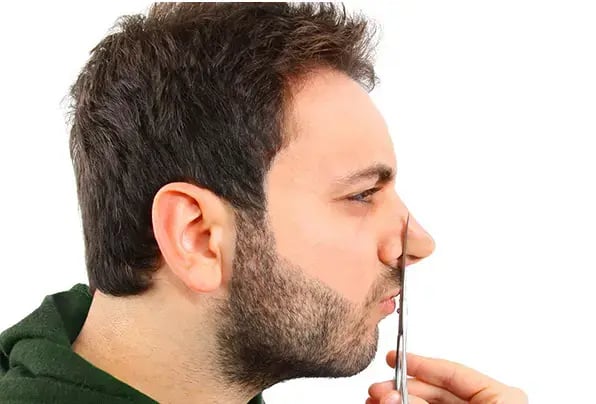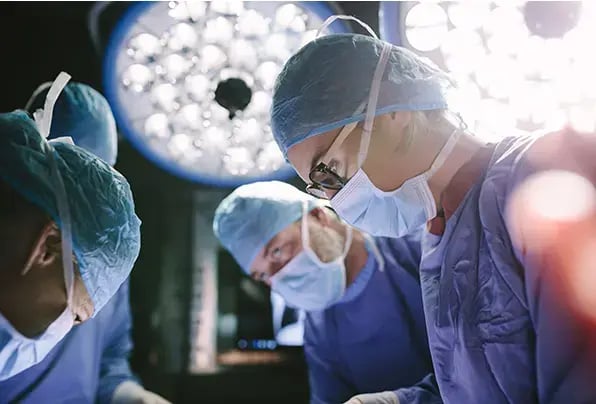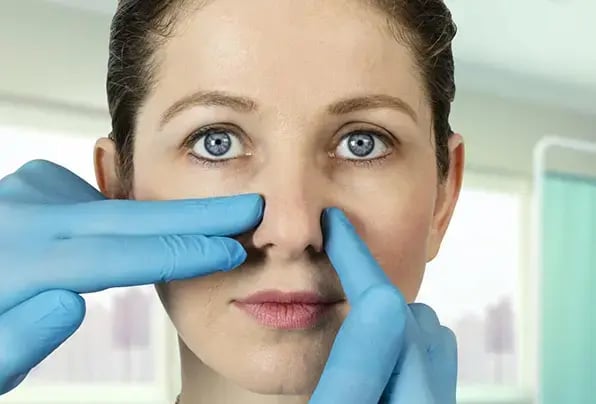Reshaping Your Nose: The Essential Guide to a Nose Job for Men
Reshaping Your Nose: The Complete Guide to Rhinoplasty for Men
Are you thinking about getting a nose job? For men, a nose job, also called rhinoplasty, can improve the look of your nose while keeping it masculine.
Whether you want to fix breathing problems, repair an injury, or just enhance your appearance, we explain everything men need to know about nose reshaping. This will help you achieve a natural and manly look.

Key Points Worth Noting
Important Points to Remember for Rhinoplasty for Men
- A nose job for men is tailored to look good and fix issues like breathing problems. It also helps boost confidence.
- The best nose jobs for men keep the nose looking masculine and in balance with the rest of the face.
- Recovery usually takes 6-8 weeks, and you can see the final results in about a year.
Understanding Male Rhinoplasty
Ever wondered why many men choose to get a nose job?
Male rhinoplasty is popular because it’s customized for each person. This surgery changes the shape, size, or function of the nose to fit men’s unique needs.
Here’s why men often get rhinoplasty:
- To improve facial balance
- To fix breathing problems from nasal issues or injuries
- To reshape the nose after accidents
- To correct a deviated septum
- To boost confidence and self-esteem
Our mission is to create a world where every investment in modern beauty is Worth It.
Let's keep in touch
Get updates of the treatments you are interested
The Consultation Process for Male Nose Surgery
Surgical Techniques for Male Rhinoplasty
Once your surgeon understands your goals and nose structure, they will choose the best surgical technique for you.
Open Rhinoplasty: This technique uses a small cut along the columella (the area between the nostrils), allowing a clear view of the nose’s inside.
Closed Rhinoplasty: This technique uses cuts inside the nose, leaving no visible scars.
Specific techniques, like tip rhinoplasty (which refines the nose’s tip) and alar base reduction (which adjusts the nostrils), focus on different parts of the nose.
These techniques aim to keep or improve nose function while making the desired aesthetic changes.
Achieving a Masculine Look
Male rhinoplasty can fix functional issues and boost confidence by enhancing masculine features.
The goal is to create a straighter nose bridge and a defined tip, avoiding a “button nose” that might look feminine. Maintaining the right nasal angles, like the nasofrontal and nasolabial angles, is important for a masculine look. The goal is a strong, masculine nose while respecting each person’s unique features.

Facial Balance and Proportions When Seeking a Male Nose Job
Customized Approach to Nose Reshaping Surgery
Male Rhinoplasty Recovery and Aftercare
Time Off Work and Activities
How long do I need to take off work after male rhinoplasty? We recommend taking two weeks off for recovery, but if you can work from home, you may return after seven days. It's best to avoid driving for the first-week post-surgery.
After two weeks, you can resume non-contact physical activities like gym workouts or low-impact exercises such as yoga. However, avoid vigorous activities like manual labor or heavy lifting for several weeks to ensure a smooth recovery.

Long-term Results
Non-Surgical Alternatives
If surgery isn't your preference, non-surgical options like a non-surgical rhinoplasty, also known as a liquid nose job, offer alternatives. This procedure uses dermal fillers like hyaluronic acid to temporarily reshape the nose. It's minimally invasive and allows many patients to return to normal activities the same day.
However, non-surgical nose jobs aren't suitable for every nose, and the results aren't permanent. You'll need touch-ups every 12-18 months, which can add up in cost over time.
Limitations and Risks
How Much Does a Male Rhinoplasty Cost?
Choosing the Right Surgeon

Frequently Asked Questions
What is the recovery time for male rhinoplasty?
Male rhinoplasty recovery typically spans two weeks, with a potential return to remote work after just one week. It's crucial to adhere to post-operative instructions, including avoiding driving during the initial week to ensure optimal healing. This period allows for the gradual reduction of swelling and bruising. Patience is key as the final results may take time to fully manifest, often up to a year. Following the surgeon's guidance closely and attending all follow-up appointments contribute significantly to a successful outcome. Additionally, maintaining a healthy lifestyle and avoiding strenuous activities during the recovery phase promotes smoother healing and enhances overall satisfaction with the procedure.
What is a non-surgical alternative to rhinoplasty?
A non-surgical alternative to rhinoplasty is known as liquid rhinoplasty. This procedure involves using dermal fillers, typically hyaluronic acid-based, to reshape and enhance the appearance of the nose. Unlike traditional surgical rhinoplasty, liquid rhinoplasty is minimally invasive and does not require incisions or anesthesia. It can address minor imperfections such as bumps or asymmetry, providing temporary results without the downtime associated with surgery. However, it's important to note that liquid rhinoplasty cannot achieve the same level of correction as surgical rhinoplasty, particularly for significant structural changes or size reduction.
How much does male rhinoplasty cost?
The cost of male rhinoplasty can vary depending on several factors, including the surgeon's experience, geographic location, specific techniques used, and the extent of the procedure required to achieve the desired results. On average, male rhinoplasty costs typically range from a few thousand to several thousand pounds. This cost usually covers the surgeon's fee, anesthesia, hospital or surgical facility fees, pre-operative and post-operative care, and any necessary follow-up appointments. It's important for individuals considering rhinoplasty to consult with a qualified plastic surgeon for a personalized evaluation and cost estimate based on their unique needs and goals.
How do I choose the right surgeon for my rhinoplasty?
Choosing the right surgeon for your rhinoplasty is a crucial decision that can greatly impact the outcome of the procedure. Here are some steps to help you select the best surgeon for your needs:
1. Research: Start by researching plastic surgeons who specialize in rhinoplasty. Look for board-certified surgeons with extensive experience specifically in rhinoplasty procedures.
2. Credentials: Verify the surgeon's credentials, including their board certification, training, and experience performing rhinoplasty surgeries.
3. Before-and-After Photos: Review before-and-after photos of the surgeon's previous rhinoplasty patients. This will give you an idea of the surgeon's aesthetic style and the quality of their work.
4. Consultation: Schedule consultations with multiple surgeons to discuss your goals, concerns, and expectations for the procedure. Pay attention to how the surgeon listens to you and addresses your questions and whether you feel comfortable with them.
5. Experience: Inquire about the surgeon's experience specifically with male rhinoplasty. Male noses often require different techniques due to thicker skin and distinct facial features.
6. Communication: Choose a surgeon who communicates openly and honestly with you about the risks, benefits, and limitations of rhinoplasty. They should also be able to explain their surgical approach and what you can expect during the recovery process.
7. Reviews and Recommendations: Read online reviews and ask for recommendations from friends, family, or healthcare professionals who have undergone rhinoplasty or have experience working with reputable surgeons.
8. Trust Your Instincts: Ultimately, trust your instincts and choose a surgeon with whom you feel confident and comfortable entrusting your rhinoplasty procedure.
By following these steps and thoroughly researching your options, you can select a skilled and qualified surgeon who is best suited to help you achieve your desired results.
What are the risks of a non-surgical nose job?
Non-surgical nose jobs, while less invasive than traditional surgical rhinoplasty, still carry certain risks and limitations. Some potential risks of non-surgical nose jobs include:
Infection: Although rare, there is a risk of infection at the injection site, particularly if proper sterile techniques are not followed.
Allergic reactions: Some individuals may experience allergic reactions to the dermal fillers used during the procedure, leading to swelling, redness, or itching at the injection site.
- Asymmetry: Improper injection techniques or uneven distribution of filler can result in asymmetrical results, where one side of the nose appears different from the other.
- Skin necrosis: In rare cases, filler injections can lead to the death of skin tissue (skin necrosis) due to compromised blood flow. This risk is higher when fillers are injected into areas with limited blood supply.
- Migration or displacement of filler: Dermal fillers used in non-surgical nose jobs may migrate or shift from their original placement over time, leading to undesirable changes in the nose's shape or appearance.
- Dissatisfaction with results: Since non-surgical nose jobs provide temporary results, there is a possibility of dissatisfaction as the effects of the filler wear off. Additionally, if the desired results are not achieved, further injections or revision surgery may be necessary.
Reshaping Your Nose: The Complete Guide to Rhinoplasty for Men
Are you thinking about getting a nose job? For men, a nose job, also called rhinoplasty, can improve the look of your nose while keeping it masculine.
Whether you want to fix breathing problems, repair an injury, or just enhance your appearance, we explain everything men need to know about nose reshaping. This will help you achieve a natural and manly look.

Key Points Worth Noting
Important Points to Remember for Rhinoplasty for Men
- A nose job for men is tailored to look good and fix issues like breathing problems. It also helps boost confidence.
- The best nose jobs for men keep the nose looking masculine and in balance with the rest of the face.
- Recovery usually takes 6-8 weeks, and you can see the final results in about a year.
Understanding Male Rhinoplasty
Ever wondered why many men choose to get a nose job?
Male rhinoplasty is popular because it’s customized for each person. This surgery changes the shape, size, or function of the nose to fit men’s unique needs.
Here’s why men often get rhinoplasty:
- To improve facial balance
- To fix breathing problems from nasal issues or injuries
- To reshape the nose after accidents
- To correct a deviated septum
- To boost confidence and self-esteem
Our mission is to create a world where every investment in modern beauty is Worth It.
Let's keep in touch
Get updates of the treatments you are interested
The Consultation Process for Male Nose Surgery
Surgical Techniques for Male Rhinoplasty
Once your surgeon understands your goals and nose structure, they will choose the best surgical technique for you.
Open Rhinoplasty: This technique uses a small cut along the columella (the area between the nostrils), allowing a clear view of the nose’s inside.
Closed Rhinoplasty: This technique uses cuts inside the nose, leaving no visible scars.
Specific techniques, like tip rhinoplasty (which refines the nose’s tip) and alar base reduction (which adjusts the nostrils), focus on different parts of the nose.
These techniques aim to keep or improve nose function while making the desired aesthetic changes.
Achieving a Masculine Look
Male rhinoplasty can fix functional issues and boost confidence by enhancing masculine features.
The goal is to create a straighter nose bridge and a defined tip, avoiding a “button nose” that might look feminine. Maintaining the right nasal angles, like the nasofrontal and nasolabial angles, is important for a masculine look. The goal is a strong, masculine nose while respecting each person’s unique features.

Facial Balance and Proportions When Seeking a Male Nose Job
Customized Approach to Nose Reshaping Surgery
Male Rhinoplasty Recovery and Aftercare
Time Off Work and Activities
How long do I need to take off work after male rhinoplasty? We recommend taking two weeks off for recovery, but if you can work from home, you may return after seven days. It's best to avoid driving for the first-week post-surgery.
After two weeks, you can resume non-contact physical activities like gym workouts or low-impact exercises such as yoga. However, avoid vigorous activities like manual labor or heavy lifting for several weeks to ensure a smooth recovery.

Long-term Results
Non-Surgical Alternatives
If surgery isn't your preference, non-surgical options like a non-surgical rhinoplasty, also known as a liquid nose job, offer alternatives. This procedure uses dermal fillers like hyaluronic acid to temporarily reshape the nose. It's minimally invasive and allows many patients to return to normal activities the same day.
However, non-surgical nose jobs aren't suitable for every nose, and the results aren't permanent. You'll need touch-ups every 12-18 months, which can add up in cost over time.
Limitations and Risks
How Much Does a Male Rhinoplasty Cost?
Choosing the Right Surgeon

Frequently Asked Questions
What is the recovery time for male rhinoplasty?
Male rhinoplasty recovery typically spans two weeks, with a potential return to remote work after just one week. It's crucial to adhere to post-operative instructions, including avoiding driving during the initial week to ensure optimal healing. This period allows for the gradual reduction of swelling and bruising. Patience is key as the final results may take time to fully manifest, often up to a year. Following the surgeon's guidance closely and attending all follow-up appointments contribute significantly to a successful outcome. Additionally, maintaining a healthy lifestyle and avoiding strenuous activities during the recovery phase promotes smoother healing and enhances overall satisfaction with the procedure.
What is a non-surgical alternative to rhinoplasty?
A non-surgical alternative to rhinoplasty is known as liquid rhinoplasty. This procedure involves using dermal fillers, typically hyaluronic acid-based, to reshape and enhance the appearance of the nose. Unlike traditional surgical rhinoplasty, liquid rhinoplasty is minimally invasive and does not require incisions or anesthesia. It can address minor imperfections such as bumps or asymmetry, providing temporary results without the downtime associated with surgery. However, it's important to note that liquid rhinoplasty cannot achieve the same level of correction as surgical rhinoplasty, particularly for significant structural changes or size reduction.
How much does male rhinoplasty cost?
The cost of male rhinoplasty can vary depending on several factors, including the surgeon's experience, geographic location, specific techniques used, and the extent of the procedure required to achieve the desired results. On average, male rhinoplasty costs typically range from a few thousand to several thousand pounds. This cost usually covers the surgeon's fee, anesthesia, hospital or surgical facility fees, pre-operative and post-operative care, and any necessary follow-up appointments. It's important for individuals considering rhinoplasty to consult with a qualified plastic surgeon for a personalized evaluation and cost estimate based on their unique needs and goals.
How do I choose the right surgeon for my rhinoplasty?
Choosing the right surgeon for your rhinoplasty is a crucial decision that can greatly impact the outcome of the procedure. Here are some steps to help you select the best surgeon for your needs:
1. Research: Start by researching plastic surgeons who specialize in rhinoplasty. Look for board-certified surgeons with extensive experience specifically in rhinoplasty procedures.
2. Credentials: Verify the surgeon's credentials, including their board certification, training, and experience performing rhinoplasty surgeries.
3. Before-and-After Photos: Review before-and-after photos of the surgeon's previous rhinoplasty patients. This will give you an idea of the surgeon's aesthetic style and the quality of their work.
4. Consultation: Schedule consultations with multiple surgeons to discuss your goals, concerns, and expectations for the procedure. Pay attention to how the surgeon listens to you and addresses your questions and whether you feel comfortable with them.
5. Experience: Inquire about the surgeon's experience specifically with male rhinoplasty. Male noses often require different techniques due to thicker skin and distinct facial features.
6. Communication: Choose a surgeon who communicates openly and honestly with you about the risks, benefits, and limitations of rhinoplasty. They should also be able to explain their surgical approach and what you can expect during the recovery process.
7. Reviews and Recommendations: Read online reviews and ask for recommendations from friends, family, or healthcare professionals who have undergone rhinoplasty or have experience working with reputable surgeons.
8. Trust Your Instincts: Ultimately, trust your instincts and choose a surgeon with whom you feel confident and comfortable entrusting your rhinoplasty procedure.
By following these steps and thoroughly researching your options, you can select a skilled and qualified surgeon who is best suited to help you achieve your desired results.
What are the risks of a non-surgical nose job?
Non-surgical nose jobs, while less invasive than traditional surgical rhinoplasty, still carry certain risks and limitations. Some potential risks of non-surgical nose jobs include:
Infection: Although rare, there is a risk of infection at the injection site, particularly if proper sterile techniques are not followed.
Allergic reactions: Some individuals may experience allergic reactions to the dermal fillers used during the procedure, leading to swelling, redness, or itching at the injection site.
- Asymmetry: Improper injection techniques or uneven distribution of filler can result in asymmetrical results, where one side of the nose appears different from the other.
- Skin necrosis: In rare cases, filler injections can lead to the death of skin tissue (skin necrosis) due to compromised blood flow. This risk is higher when fillers are injected into areas with limited blood supply.
- Migration or displacement of filler: Dermal fillers used in non-surgical nose jobs may migrate or shift from their original placement over time, leading to undesirable changes in the nose's shape or appearance.
- Dissatisfaction with results: Since non-surgical nose jobs provide temporary results, there is a possibility of dissatisfaction as the effects of the filler wear off. Additionally, if the desired results are not achieved, further injections or revision surgery may be necessary.









